序章
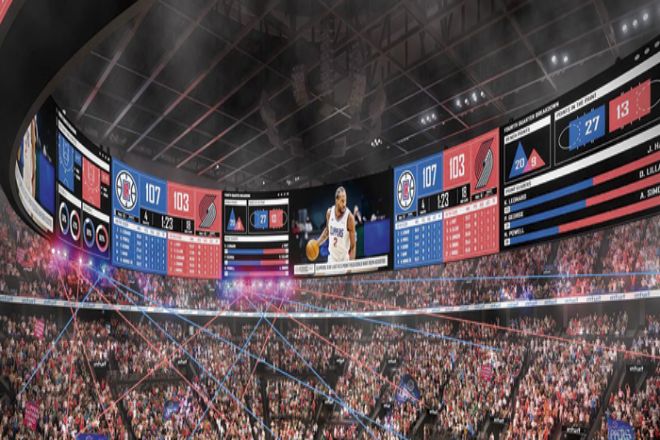
Flexible LED display, the crystallization of modern material science and optoelectronic technology, not only breaks the rigid limitations of traditional display screens but also brings a qualitative leap to the visual effects of sports stadiums with its lightweight, bendable, high-definition, and other characteristics.
It can be not only flexibly installed according to the complex structure of the venue to form a stunning curved or surround screen but also present high-definition pictures, wonderful moments, and detailed data statistics of the game in real-time, greatly enhancing the audience’s immersion and sense of participation.
This article will explore the application of flexible LED displays in sports stadiums in-depth; let’s take a look.
1. Advantages of flexible LED display in sports stadiums
1). Improve the viewing experience
1.1). Flexible installation to form a seamless curved or surround screen:
Flexible LED display, with its unique bendable and rollable characteristics, can perfectly adapt to various complex venue structures and curved designs.
In sports stadiums, this means that the installation plan can be customized according to the shape of the stands, ceiling height, or the edge of the field to form a seamless curved screen or a 360-degree surround screen.
Such a design not only breaks the limitations of traditional flat screens but also greatly enhances the visual immersion and three-dimensional sense, making the audience feel as if they are in the game. Whether watching live broadcasts, slow-motion replays, or real-time data statistics, they can get a more shocking and realistic visual experience.
1.2). Enhance the audience’s sense of immersion and participation:
Through advanced technologies such as high-definition picture quality, high リフレッシュレート, and wide color gamut, the flexible LED display can accurately restore every detail of the game scene, including every move of the players, the trajectory changes of the ball speed, etc., so that the audience can feel unprecedented realism and participation.
At the same time, combined with the sound system and interactive technologies in the venue, such as AR augmented reality, the viewing experience can be further enriched, making the audience seem to be integrated with the event.
2). Enhance the versatility of the venue
2.1). Easy to disassemble and reassemble, adapt to the needs of various activities:
Another significant advantage of the flexible LED display is its high flexibility and reconfigurability. Compared with traditional rigid displays, flexible LED displays are lighter and easier to install and disassemble and can quickly adjust the layout and size according to the needs of different activities.
This enables stadiums to easily achieve seamless transitions from スポーツ events to concerts, 展示会, and other activities, greatly improving the utilization rate and economic benefits of the venues.
2.2). Flexibility as a temporary ステージ background, billboard, etc.:
Besides sports events, flexible LED displays can also be used as temporary stage backgrounds, billboards, etc., adding more creativity and highlights to the event.
Its diverse display content and flexible display methods can attract more audience attention and interest, creating more commercial value and publicity opportunities for sponsors and organizers.
3). Energy saving, environmental protection and cost-effectiveness
3.1). High energy efficiency ratio and long service life:
Flexible LED displays excel in energy efficiency, with high luminous efficiency and low energy consumption.
This means that under long-term operation, its power consumption is much lower than that of traditional displays, which helps to reduce the operating costs of venues and reduce the impact on the environment.
At the same time, flexible LED displays also have a long service life and stable performance, and can maintain high-quality display effects and reliability for a long time.
3.2). Low maintenance cost:
Although the initial investment of flexible LED displays may be relatively high, its maintenance cost is relatively low in the long run. This is mainly due to its advanced manufacturing process and high-quality material selection, which makes the display screen less prone to failure and damage during long-term use.
In addition, the flexible LED display screen also has a high self-repair ability, which can reduce the burden and cost of maintenance work to a certain extent.
3.3). Cost-effectiveness in long-term operation:
Considering the advantages of flexible LED display screens in improving the viewing experience, enhancing the versatility of venues, and energy saving and environmental protection, it can be concluded that its cost-effectiveness in long-term operation is very significant.
Although the initial investment is large, with the passage of time and the improvement of venue utilization, the economic and social benefits it brings will gradually emerge and exceed traditional displays. Therefore, for stadiums that pursue high-quality and sustainable development, flexible LED display screens are undoubtedly a preferred option worthy of consideration.
2. Where are flexible LED displays generally installed in stadiums?
The installation location of flexible LED displays in stadiums usually depends on a variety of factors, including the structure of the venue, the viewing angle of the audience, the needs of the event, and the budget. The following are some common installation locations:
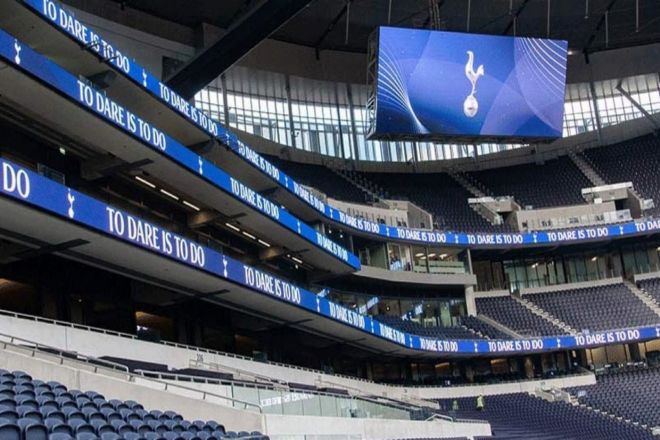
1). Around the auditorium:
The flexible LED display screen can be installed above or on the side of the auditorium to form a wraparound or curved screen to provide the audience with an immersive viewing experience. This installation method can enhance the visual impact and make the audience feel as if they are at the game scene.
- Central venue:
For some sports events or activities that need to highlight the performance of the central venue, such as basketball, football, etc., the flexible LED display can be installed above the center of the venue as a screen for game timing, score display, or advertising display.
This installation method requires the display to have high stability and load-bearing capacity.
2). The edge of the venue:
The edge of the venue is also one of the common installation locations for flexible LED displays. By installing the screen at the edge of the venue, game information, athlete data, etc., can be displayed in real-time, providing the audience with more comprehensive event information.
At the same time, this installation method also helps to enhance the overall visual effect and viewing experience of the venue.
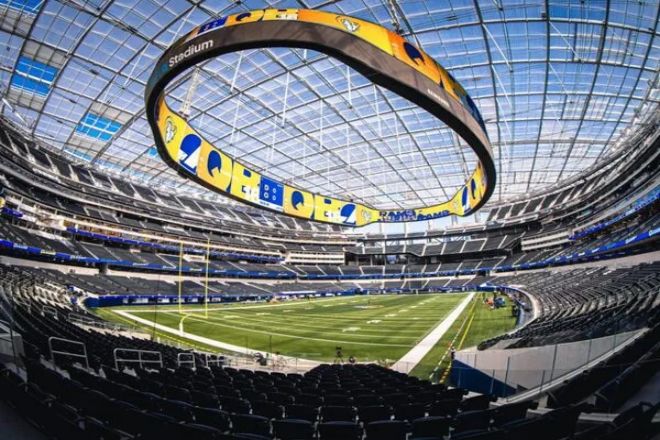
3). Multi-functional area:
Sports venues usually have multiple multi-functional areas, such as stages, rest areas, etc. In these areas, flexible LED displays can be used as temporary stage backgrounds, billboards, or information display screens.
Due to its easy disassembly and reorganization, flexible LED displays can be flexibly adjusted according to the needs of different activities.
It should be noted that the installation location of the flexible LED display should fully consider the viewing angle and sight height of the audience to ensure that the audience can clearly see the content on the screen.
At the same time, during the installation process, factors such as the stability, load-bearing capacity, and safety of the display screen need to be considered to ensure that there are no safety hazards during long-term use.
3. Application examples of flexible LED display screens in sports venues
In sports venues, the application of flexible LED display screens is becoming more and more extensive, bringing a new viewing experience to the audience.
The following is an analysis of several representative application examples of flexible LED display screens in domestic and foreign sports venues:
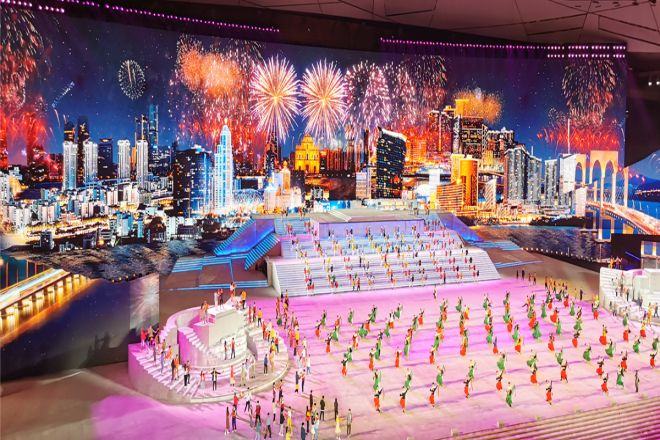
1). Beijing Winter Olympics venues
- Opening and closing ceremonies:
At the opening ceremony of the Beijing Winter Olympics, about 11,000 square meters of ground display screens, 1,200 square meters of ice waterfall screens, 600 square meters of ice cube screens, and 1,000 square meters of stand screens together formed a world-class LED display system.
Although it is not explicitly mentioned whether flexible LED display screens are used, considering the flexibility and creativity of flexible screens, they may be used in some special shapes or curved structures.
These displays present an unparalleled audio-visual feast to the audience by constructing a three-dimensional stage.
Wukesong Ice Sports Center:
Unilumin Technology provides Wukesong Ice Sports Center with large, high-definition screens to help build an LED timing and scoring display system.
While these screens may be primarily rigid LED screens, the flexibility and creativity of flexible LED displays are also options worth considering when designing similar projects.
Success:
Design creativity: The three-dimensional stage and rich visual effects built with LED displays fully demonstrate the combination of technology and aesthetics, adding a unique charm to the Winter Olympics.
Technical implementation: Through high-precision LED display technology and innovative installation solutions, the stability and display effect of the display are ensured, providing the audience with a high-quality viewing experience.
Audience feedback: The audience generally appreciated the visual effects during the opening ceremony and the event and believed that these innovative designs enhanced the viewing and immersiveness of the game.
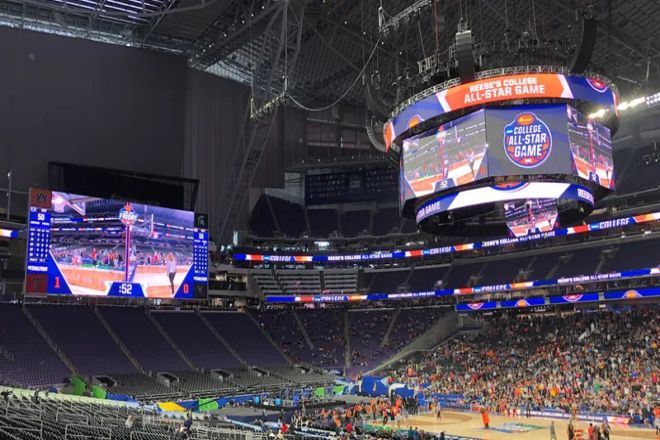
2). NBA stadiums in the United States
- NBA All-Star Game LED court:
The 2024 NBA All-Star Game will be held on a brand new LED court, which is a typical example of the application of flexible LED displays in sports stadiums.
As a competition venue, the LED screen not only displays visual effects such as design changes and color changes but also incorporates functions such as real-time statistics and player position tracking animations, bringing an unprecedented visual experience to the audience.
- Staples Center, home of the NBA Lakers:
The venue uses a ceiling screen system designed, manufactured, and installed by Retop, including a seamless transition arc screen at the top and bottom and a high-definition screen in the center of the main screen.
These screens achieve the “blackest and brightest” display effect by improving contrast and brightness and using ultra-high-definition three-in-one black shell surface mount technology, providing the audience with a clearer viewing experience.
Success:
- Design creativity:
The design of the LED court breaks the boundaries of the traditional basketball court, perfectly combines technology and sports, and brings a new viewing experience to the audience.
The ceiling screen system of the Staples Center also achieves excellent display effects through innovative design and advanced technology.
- 技術的な実装:
Both the LED court and the ceiling screen system use advanced technology and manufacturing processes to ensure the stability and high definition of the display.
At the same time, various complex visual effects and interactive functions are realized through intelligent control systems.
- 視聴者のフィードバック:
The audience responded very positively to the LED court and ceiling screen system, believing that these innovative designs greatly enhanced the viewing and entertainment of the game.
They said that they felt an unprecedented sense of immersion and participation during the viewing process.
4. Challenges faced by flexible LED screens in stadiums
1). Cost Control
Flexible LED screens use flexible materials as substrates, which are often more expensive than traditional rigid materials.
In addition, in order to ensure the flexibility and durability of the screen, higher-level packaging materials and processes are also required, further increasing the cost.
- Manufacturing and maintenance:
The manufacturing process of flexible LED screens is more complicated, requiring more sophisticated equipment and higher technical levels, which will also lead to an increase in manufacturing costs.
At the same time, due to the particularity of its structure, later maintenance and replacement may also be more complicated and expensive than traditional screens.
2)放熱管理
Flexible LED screens generate a lot of heat during operation. If the heat dissipation is poor, it will not only affect the performance and life of the screen, but may also cause safety hazards.
Due to its flexible characteristics, traditional heat dissipation methods such as fan heat dissipation may not be applicable, and more efficient heat dissipation designs such as liquid bulb packaging technology and heat pipe technology are required.
- 構造設計:
In large-scale application scenarios such as stadiums, how to reasonably design the heat dissipation structure to ensure that the heat can be quickly dissipated is an important technical problem faced by flexible LED screens.
3). Mass customization
Sports venues often have special requirements for the size, shape and installation of display screens, which requires flexible LED display screens to have the ability of mass customization.
However, this customization demand puts higher requirements on both design and manufacturing, requiring companies to have strong R&D and production capabilities.
- Cost and efficiency:
In the process of mass customization, how to balance cost and efficiency to ensure that while meeting customer needs, it will not excessively increase costs and time investment is a problem that flexible LED display screen companies need to face.
4). Market acceptance
At present, the awareness of flexible LED display screens in high-end application scenarios such as sports venues is still relatively low.
Many users do not have enough understanding of its performance and advantages, which, to a certain extent, limits its market promotion and application.
In order to improve market awareness, flexible LED display screen companies need to strengthen product publicity and promotion efforts and improve users’ understanding and cognition of products through case presentations, technical exchanges, and other methods.
5. BIBILED recommended technology:
BIBILED flexible LED display screen
推奨理由:
- Adapt to complex environments:
Flexible LED display screens use flexible materials that can be bent, folded or even curled, greatly improving the flexibility of installation.
This feature enables it to adapt to various irregular installation environments, such as curved walls, cylinders, etc., providing more creative space for advertising, display, etc.
- Multiple installation methods:
Flexible LED display screens support multiple installation methods, including floor-standing, hanging, embedded and hanging, etc., with less geographical restrictions on installation, and can be widely used in various occasions.
- 応答速度が速い:
The flexible LED display screen has a very fast response speed, which is completely suitable for the fast pace of the sports market.
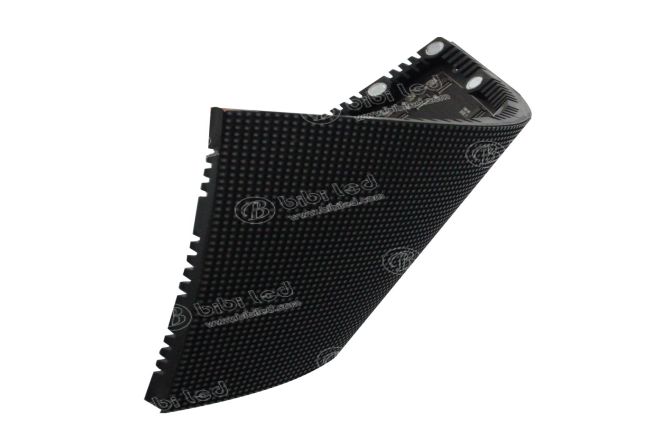
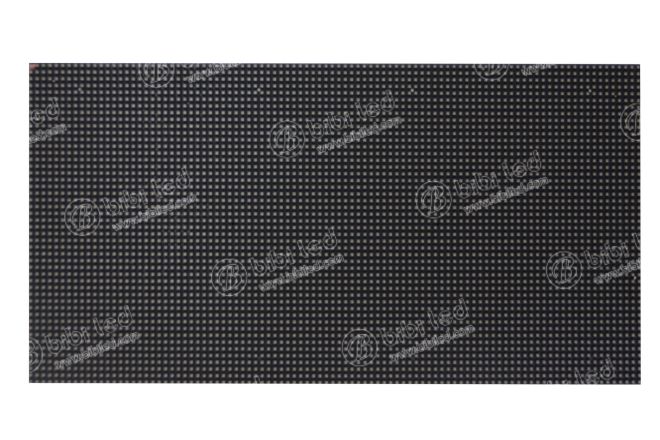
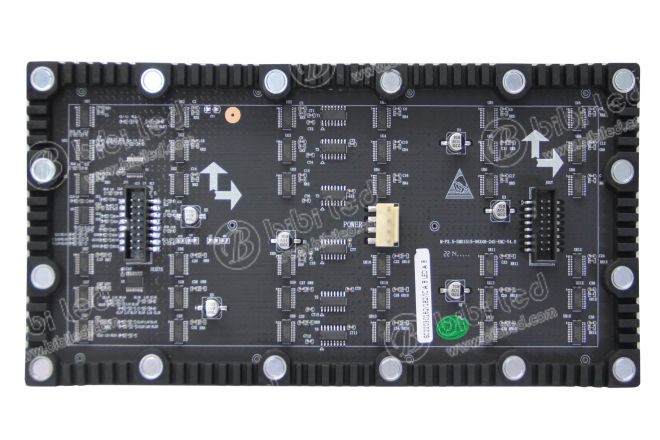
結論
In summary, as the new favorite of sports venues, flexible LED display screens have not only won the favor of the market with their excellent technical performance and wide application prospects but also have become a model of the perfect combination of technology and sports with their profound changes in the viewing experience and their active promotion of the development of the sports industry.
In the days to come, we have reason to believe that with the continuous maturity of technology and the continuous expansion of the market, flexible LED display screens will show their unique charm and unlimited possibilities in more fields.
最後に、LEDディスプレイスクリーンについてさらに詳しく知りたい場合は、 ご連絡ください。
